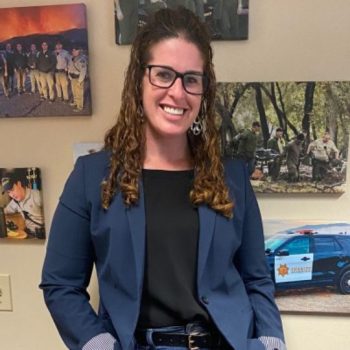Articles
What we’re contemplating, doing, and reading.
Wherever You Go, You Take Yourself With You
In life, and in law enforcement, so much of what makes us great is our ability to do one thing while thinking about another. For example, have you ever been waiting at the DMV and found it’s 15 minutes past your appointment time but your number still hasn’t been called?
Rather than sit and perseverate about the present injustice that impeded your lunch break, you likely opted to focus on something else. Maybe you decided to catch up on work emails, talk with a friend, or buy something incredibly necessary (isn’t it always?) from Amazon.
The ability to be in one place physically and in another place mentally is an adaptive quality some of the time — yet at other times it can be problematic. Clearly, it’s a productive tactic while at the DMV, but one that may buy you trouble if you are in a face-to- face conversation with your supervisor or your significant other.
For law enforcement, the ability to do one thing and feel another is imperative. We call it compartmentalization. It is not safe nor is it appropriate for cops to feel their feelings during calls for service. Their role is to solve someone else’s problem in an efficient and effective manner, and emotions can get in the way of that objective. Not always, but often enough that cops are trained for this.
Unfortunately for the officer (and those they love), this ability to compartmentalize becomes too familiar, too comfortable, too practiced — and it can become the way one operates in their own personal lives. Initially, compartmentalization is a choice. However, over time, the brain and body adapt to this way of being in the world. Disengaging becomes the default setting. Before you know it, cops find themselves disconnected from those they love. They wonder why their relationships are falling apart, and blame themselves for it.
Calibrating Emotions
The beauty of this conundrum is that there is a way to navigate it successfully. It is absolutely possible to control or calibrate one’s emotions depending on the environment and circumstances. We want officers to dial up the compartmentalization when they need to (because officer safety is paramount) and dial it down when they don’t need to.
In order to do this successfully, we have to start at the beginning. The first step in having control over any internal (or external) process involving the self, starts with self-awareness. For almost 10 years, I have been working with officers in my private practice,primarily treating trauma. There has yet to be an officer I have worked with who hasn’t suffered the effects of trauma. Consequently, there has yet to be an officer I have worked with where we didn’t discuss mindfulness. Not only do we discuss the anatomy of how one becomes hypervigilant (activating the amygdala and the sympathetic nervous system) and the anatomy of how mindfulness works (via the parasympathetic nervous system), but we also engage in experiential exercises to test the theory. Is this a distilled explanation of the “how and why”? Yes. But we are not trying to teach a graduate course — we are trying to save a relationship, or a life. Time isn’t always on our side so we have to get to work.
Self-Regulation Tactics at Home
Interestingly — and perhaps unbeknownst to the general public— law enforcement professionals are taught how to self-regulate their breathing in the academy. The instruction encapsulates this learning within the context of officer safety. If you can focus and breathe, you are more alert, aware, and responsive in the field.
What they aren’t told is that this same tactic or tool is what they need to utilize at home to be more alert, aware, and responsive in their relationships. They have some of the tools, they just need the roadmap (or the “operations plan,” as it were).
Mindfulness is often the first step in an officer’s journey towards healing. Once the home environment is stabilized, we often delve into trauma work, where the skills taught in mindfulness training are paramount for a successful clinical intervention.
I’ll conclude with a quote widely used by the Japanese author Haruki Murakami, “Pain is inevitable. Suffering is optional.” In law enforcement, the job comes with a lot of pain. Some might say pain is the job (there are only so many death notifications one can do without being affected by it ). It is the job of those of us who support officer health and wellness to reduce their suffering. We can’t take away their pain — but we can teach them what to do with it.
Dr. Cherylynn Lee is a police psychologist at Santa Barbara County Sheriff’s Office specializing in law enforcement operations and officer wellness, and is a recognized expert in first responder post traumatic stress injury (PTSI). She delivers training to law enforcement across the USA, focusing on wellness and how to thrive and survive in the law enforcement profession.
Additionally, Dr. Lee is the Law Enforcement & Public Safety Advisor to Compassion Institute’s Courageous Heart Program.


